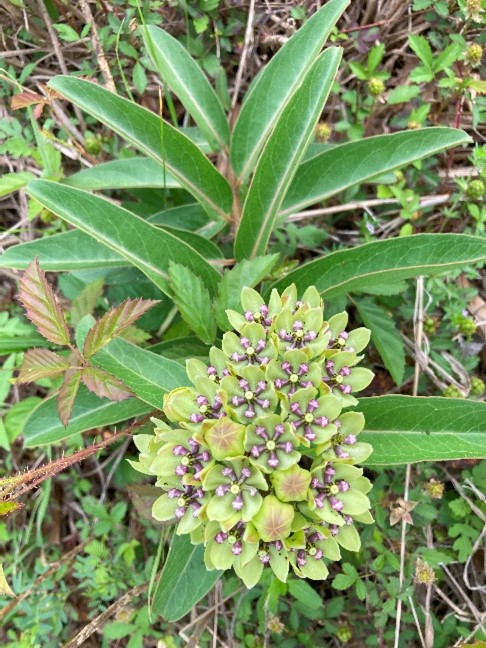PUBLISHED: May 2025 by Liz Rebstad
As the days grow longer and the air begins to warm, Houston grasslands, native landscapes, and roadsides come alive with color. Spring is a season of return and new beginnings, not just for migratory birds and pollinators, but for native plants that have waited patiently underground all winter. Here are a few standouts to keep an eye out for when you’re wandering the Bayou Greenways trails:
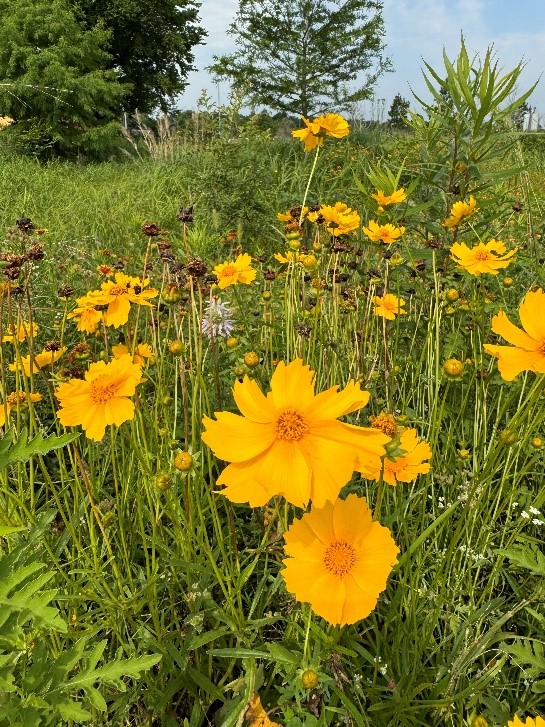
Lanced Leaf Coreopsis (Coreopsis lanceolata)
Bright yellow and cheerful, this early bloomer is easy to spot thanks to its daisy-like flowers and narrow, lance-shaped leaves. While you might see it in native landscape beds, it’s most exciting to find naturally scattered across open grasslands. It thrives in disturbed soils and is often one of the first bursts of color in the spring. Coreopsis is a magnet for native bees and butterflies.
Rattlesnake Master (Eryngium yuccifolium)
With its spiky, sword-like leaves and globe-shaped flower heads, Rattlesnake Master is often mistaken for something from another ecoregion (like the desert). But it’s right at home in tallgrass prairies and savannas. Despite its tough appearance, it supports a rich community of pollinators, including specialized wasps and native bees. Look for it in full sun, often standing tall among grasses. But watch your step, it’s a little spiky.

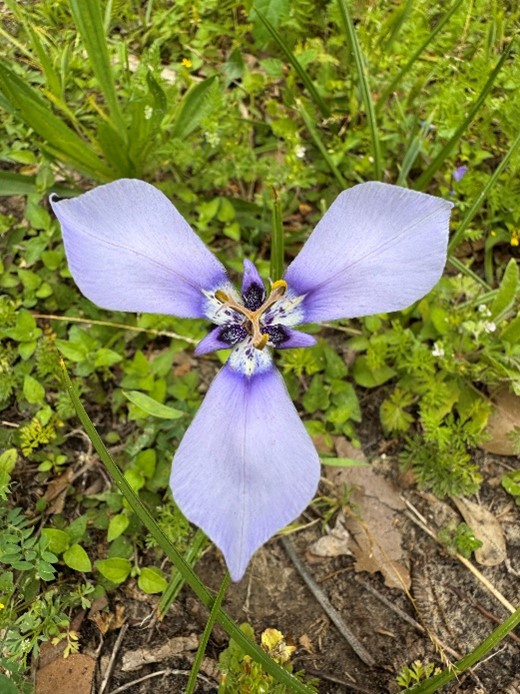
Prairie Nymph (Herbertia lahue)
This tiny iris-relative is easy to miss unless you’re looking down. Just a few inches tall, Prairie Nymph grows low in shortgrass prairies and even shows up in mowed lawns that haven’t been treated with herbicides. Its delicate violet petals open up wide in the morning sun, usually fading by midday. It’s a brief but charming sign that spring is well underway. Often, you’ll notice that turf areas along the Bayou Greenways are covered with Prairie Nymph in early spring.
Tropical Sage (Salvia coccinea)
This native salvia brings upright spikes of red (and sometimes pink or coral) flowers to moist, partly shaded habitats. It’s drought-tolerant, reseeds easily, and blooms reliably throughout the warmer months. A favorite of hummingbirds and bees, Tropical Sage adds a splash of color to prairies and home gardens alike. You’ll spot it in both wild and landscaped parts of Houston’s greenspaces.
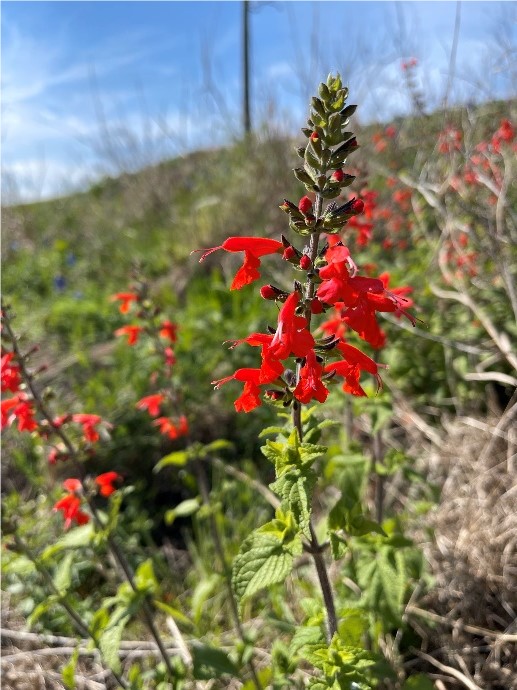
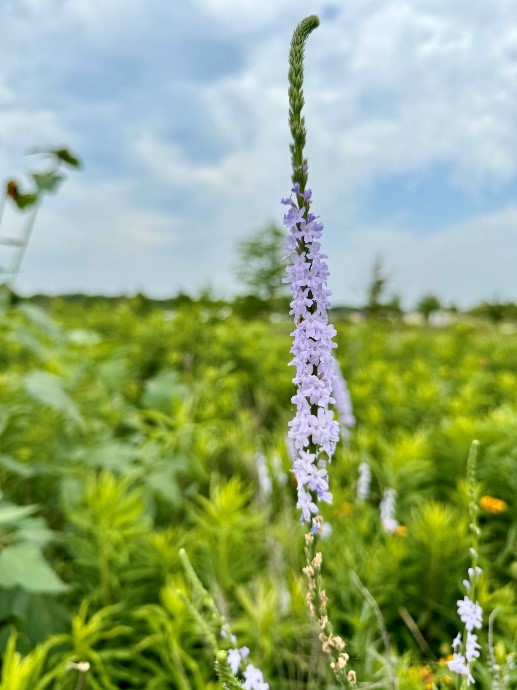
Texas Vervain (Verbena halei)
With tall, slender stems and clusters of tiny lavender flowers, Texas Vervain is a subtle but constant presence from spring into summer. It tends to pop up in fields, roadsides, and disturbed areas, thriving in dry soils and full sun. Though each individual flower is small, together they create a soft, swaying cloud of color. Butterflies love it, especially smaller species like skippers. This is common along White Oak Bayou
Lyreleaf Sage (Salvia lyrata)
You’ll often spot Lyreleaf Sage in woodland edges, shady trail sides, or even tucked under trees in riparian areas. It’s named for the shape of its basal leaves, which are sometimes mottled with deep purple. The blue-violet flower spikes rise up in spring and early summer, attracting bumblebees and other long-tongued pollinators. It spreads easily in moist, partly shaded areas and can form beautiful groundcover patches.
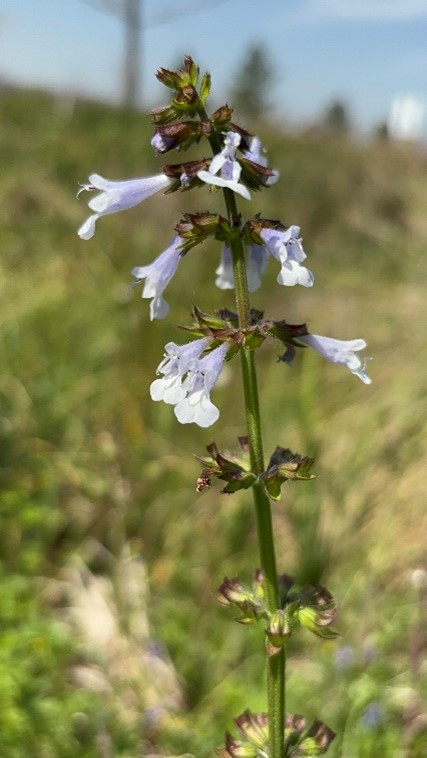

Obedient Plant (Physostegia virginiana)
Despite the name, this plant has a bit of a wild side, it spreads through rhizomes and can take over if not kept in check. But its rows of tubular, snapdragon-like flowers are beloved by bees, especially bumblebees and carpenter bees. Native to moist prairies and streambanks, it blooms later in spring and continues into summer. The name comes from the flowers’ ability to stay in place when gently moved, hence the name, “obedient.”
Green Milkweed (Asclepias viridis)
One of the earliest milkweeds to bloom in Houston, Green Milkweed has thick leaves and pale green flowers with purple centers. It’s a vital food source for monarch caterpillars and a nectar plant for many butterflies. Look for it in open grasslands that have well-drained soils. Its subtle flowers are easy to miss at a glance but worth a closer look.
